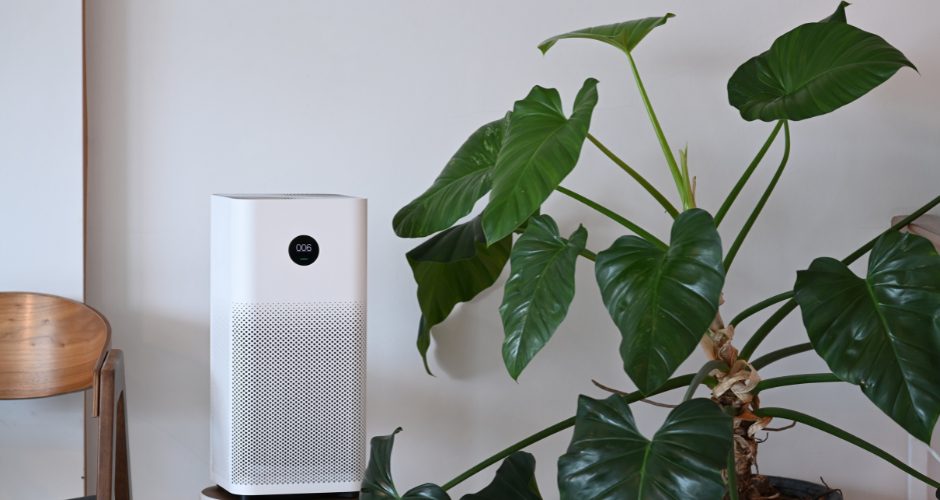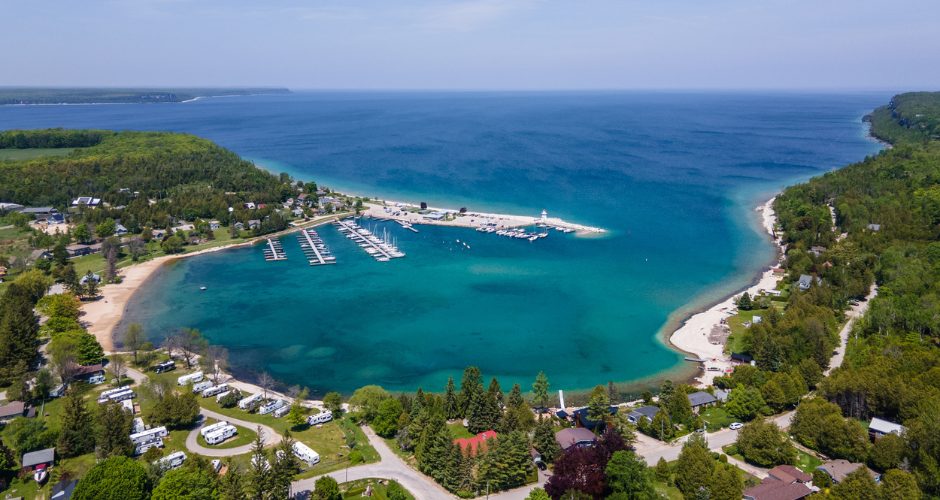Social Links Widget
Click here to edit the Social Media Links settings. This text will not be visible on the front end.
7 Primary Bedroom Staging Ideas

As you most likely know, staging involves setting up the furniture, art and accessories of each room to help make your home look as appealing as possible to potential buyers. It’s similar to what furniture stores do when they create displays of model bedrooms, kitchens, etc. When you’re staging your home, the primary bedroom is particularly important. Here are some simple staging tips worth trying:
Mirrors
Using mirrors strategically in a primary bedroom can create an illusion of more space and enhance the room’s brightness. Position mirrors opposite windows to reflect natural light and make the room feel larger and more inviting. Additionally, consider placing a full-length mirror on a wall or a mirrored piece of furniture to add a touch of elegance and functionality.
Give Your Bed a Refresh
Updating the bedding is a simple yet impactful way to refresh the bedroom. Choose a new comforter or duvet cover in neutral or soothing colours to evoke a sense of calm. Layer the bed with decorative pillows and a throw to create a luxurious, hotel-like appearance. This not only makes the bed the focal point but also adds a touch of sophistication.
Light it Up
Proper lighting is crucial in staging a bedroom. Ensure that the room is well-lit by opening curtains and blinds to let in natural light. If natural light is limited, add lamps or install brighter light bulbs to illuminate the space. During viewings, make sure all lights are turned on to create a warm and welcoming atmosphere.
Declutter
A clutter-free bedroom is essential for creating a serene environment. Remove unnecessary items from the room, especially from the closet and under the bed. Organize the closet by style and colour, and use storage bins to keep items tidy. A well-organized and spacious closet can be a significant selling point for potential buyers.
Depersonalize
To help buyers envision themselves in the space, remove personal items such as family photos, personal collections, and memorabilia. This allows the room to feel more like a blank canvas, making it easier for buyers to imagine their own belongings in the space.
Practice the Art of Minimalism
Adopting a minimalist approach can make the bedroom appear more spacious and less cluttered. Limit the number of accessories on nightstands and dressers to two or three items that complement the room’s theme. Opt for simple, elegant pieces such as a vase, a book, or a candleholder to add a touch of style without overwhelming the space.
Paint
Neutral colours are highly recommended for staging a bedroom. Shades like beige, grey, and soft whites create a calming and serene environment. These colours also appeal to a broader range of buyers and allow them to visualize their own decor in the space. Avoid bold or bright colours, as they can be polarizing and may not appeal to everyone.
Transform Your Primary Bedroom for Success

Ideally, you want to make the primary bedroom look like a calm and welcoming retreat. For even more inspiration and creative staging ideas, be sure to check out Pinterest!
Related: Elevate Your Home’s Appeal: Staging Tips for Every Room
Looking to buy, sell, or invest? Contact me today for a complimentary property valuation!
For more information, contact:
Susan Moffat, REALTOR® with Century 21 In-Studio Realty Inc., Brokerage
519.377.5154
susan.moffat@c21.ca
DIY Outdoor Space Makeover Tips

Transforming your outdoor space can be a rewarding project that enhances both the functionality and aesthetic appeal of your home. Whether you’re looking to create a serene garden retreat or an entertaining hub, here are some DIY tips to help you achieve a stunning outdoor makeover.
Plan Your Space

Before diving into any project, take the time to plan your space. Consider how you want to use the area and what features are most important to you. Do you need a place for storage, a cozy seating area, or a vibrant garden? Sketch out your ideas and create a layout that maximizes the potential of your outdoor space.
Create Functional Storage

A well-organized outdoor space starts with adequate storage. Build or buy a storage shed to keep gardening tools, lawn equipment, and other outdoor essentials neatly tucked away. This not only declutters your space but also makes it more efficient and enjoyable to use.
Add Comfortable Seating

Comfortable seating is essential for any outdoor area. Consider building or purchasing weather-resistant furniture that suits your style and needs. Arrange seating around focal points like fire pits or garden features to create inviting conversation areas. To give your patio furniture a fresh new look, change your cushion covers. Choose a colour theme and incorporate that with both solid colours and patterns. Ensure the fabric dries quickly and is easy to clean.
Install a Fire Pit

A fire pit can be a great addition to your outdoor space, providing warmth and a gathering spot for family and friends. DIY fire pits can be made using inexpensive materials like concrete blocks or landscaping stones. This project can transform your backyard into a cozy retreat perfect for evenings under the stars.
Illuminate Your Space

Lighting can dramatically enhance the ambiance of your outdoor area. Use solar-powered lights to highlight pathways, garden beds, and seating areas. This not only adds beauty but also improves safety and usability after dark. For a touch of whimsy, string lights on a porch, balcony, or pergola will do the trick. For a modern, sleek look there are smart LED light strips you can connect with a virtual assistant like Alexa. Layer light for dimension and to set the mood.
Revive Your Deck or Patio

If your deck or patio is looking worn, give it a facelift. Power-wash and scrub the surface to remove dirt and grime, then apply a fresh coat of stain or paint. This simple update can make a significant difference in the overall look and feel of your outdoor space.
Upgrade Walkways

Enhance your outdoor space by upgrading your walkways. Gravel, brick, or stone paths can add a touch of elegance and guide visitors through your garden. Consider adding built-in seating or conversation areas along the route to create a more interactive and enjoyable space.
Build Raised Planters

Raised planters are a fantastic way to add greenery to your outdoor area while keeping plants organized and accessible. They are easy to build and can be customized to fit any space. Use high-quality soil and fertilizer to ensure your plants thrive.
Personalize with Decorative Elements

Add personality to your outdoor space with decorative elements like garden art, water features, or custom-built structures. These touches can reflect your style and make your outdoor area feel like an extension of your home.
Maintain and Enjoy

Once your makeover is complete, regular maintenance is key to keeping your outdoor space looking its best. Set aside time for gardening, cleaning, and any necessary repairs. Most importantly, take the time to enjoy your new outdoor haven.
Your Outdoor Oasis Awaits

By following these DIY tips, you can create a beautiful and functional outdoor space that enhances your home and provides a perfect setting for relaxation and entertainment. Try browsing Pinterest for more inspiring backyard makeover ideas. Happy renovating!
Related: Instant Home Improvement: Budget-Friendly Tips for a Fresh Look
Looking to buy, sell, or invest? Contact me today for a complimentary property valuation!
For more information, contact:
Susan Moffat, REALTOR® with Century 21 In-Studio Realty Inc., Brokerage
519.377.5154
susan.moffat@c21.ca
How to Quickly Improve Indoor Air Quality

Unfortunately, air quality alerts are becoming a more common occurrence these days. Aside from that, there are many reasons why the air quality in your home may not be at its best. Maybe it’s a faulty furnace or an aged carpet to blame. Until you get those issues addressed, how can you quickly improve indoor air quality?
Here are some ideas:
Use an Air Purifier
Choose a device that uses a HEPA filter, the gold standard for indoor air purifiers. Also, look for one that has a CADR rating equal to at least two-thirds of the room’s area. You may also want to consider if the purifier’s energy costs and ongoing maintenance costs are within your budget.
Check the Furnace Filter
This is one of the most overlooked maintenance items in the home. Any furnace repair person can tell you stories about filters they’ve seen caked in dust. Make sure those aren’t yours. Air passes through those filters before circulating throughout your home. Replacing a filter takes less than five minutes.
Clean the Drains
Drains are a surprisingly common source of odour in the home. Most people only clean them when they’re clogged, but they should be flushed thoroughly with a good-quality cleaner at least once a season.
Turn on the Bathroom Fan
Not only do bathroom fans remove odour, but they also reduce moisture build-up. About 50% of air pollutants originate from some type of moisture; mould is the worst of these pollutants. Professionals recommend you keep your bathroom fan on for at least 30 minutes after a shower.
Clean your Doormat
Even if your doormat doesn’t smell, it can be a source of air pollutants. When people wipe their shoes, they transfer outside pollutants from their shoes to your mat.
Hope these tips have you breathing a little bit easier!
Related: Instant Home Improvement: Budget-Friendly Tips for a Fresh Look
Looking to buy, sell, or invest? Contact me today for a complimentary property valuation!
For more information, contact:
Susan Moffat, REALTOR® with Century 21 In-Studio Realty Inc., Brokerage
519.377.5154
susan.moffat@c21.ca
The Reality of Living in Grey Bruce’s Most Popular Tourist Destinations

Are you considering making a move to a tourist town in Grey Bruce, Ontario? Popular destinations like Sauble Beach, Blue Mountains, or Tobermory offer unique living experiences that can be both exciting and challenging. These towns attract visitors year-round with their natural beauty, outdoor activities, and cultural attractions. Before you decide to call one of these tourist hotspots home, it’s essential to weigh the pros and cons to determine if it’s the right fit for you and your family. Here are some key factors to consider:
Embrace the Crowds
Tourist towns are bustling with visitors, especially during peak seasons. Ask yourself how you feel about living in a place that attracts a lot of people. If you enjoy a lively atmosphere and meeting new people, this might be a perfect fit. However, if you prefer peace and quiet, the constant influx of tourists might be overwhelming.
Economic Benefits
Living in a tourist town can offer economic advantages. Increased tourism can lead to more job opportunities and business growth. If you own a business or are considering starting one, a tourist town can provide a steady stream of customers. Additionally, property values in tourist areas often appreciate faster, which can be a good investment.
Higher Cost of Living
While there are economic benefits, it’s also important to consider the potential increase in the cost of living. Property taxes and housing prices can be higher in tourist towns due to the demand. Ensure that your budget can accommodate these potential increases before making a decision.
Community and Lifestyle
Tourist towns often have a strong sense of community and a variety of amenities and activities. From local festivals to outdoor adventures, there is always something to do. If you enjoy an active lifestyle and community involvement, you will likely thrive in a tourist town. However, it’s crucial to visit the town during different seasons to get a true sense of what living there year-round would be like.
Infrastructure and Services
Consider the infrastructure and services available in the town. Tourist towns typically have well-developed infrastructure to support the influx of visitors, which can be beneficial for residents. However, during peak tourist seasons, you might experience congestion and longer wait times for services. Assess whether the town’s infrastructure meets your needs and expectations.
Seasonal Fluctuations
Tourist towns can experience significant seasonal fluctuations. The town might be bustling in the summer and quieter in the winter. Think about how these fluctuations align with your lifestyle and preferences. Some people enjoy the seasonal changes, while others might find the off-season too quiet or the peak season too hectic.
Living in a Tourist Town: How to Know if It’s Right for You

Living in a tourist town in Grey Bruce can offer a vibrant and dynamic lifestyle with numerous benefits. However, it’s essential to consider how the crowds, cost of living, community, infrastructure, and seasonal fluctuations align with your personal preferences and lifestyle. By carefully evaluating these factors, you can make an informed decision about whether living in a tourist town is right for you.
Related: How to Decide if a Neighbourhood is Right for You
Looking to buy, sell, or invest? Contact me today for a complimentary property valuation!
For more information, contact:
Susan Moffat, REALTOR® with Century 21 In-Studio Realty Inc., Brokerage
519.377.5154
susan.moffat@c21.ca
June 2024 Real Estate Market Update

REALTORS® Association of Grey Bruce Owen Sound MLS® home sales remain subdued in June.
The number of homes sold through the MLS® System of the REALTORS® Association of Grey Bruce Owen Sound totaled 242 units in June 2024. This was a substantial decline of 18% from June 2023.
Home sales were 22.6% below the five-year average and 27.2% below the 10-year average for the month of June.
On a year-to-date basis, home sales totaled 1,221 units over the first six months of the year. This was a decline of 7.6% from the same period in 2023.
The MLS® Home Price Index (HPI) tracks price trends far more accurately than is possible using average or median price measures. The overall MLS® HPI composite benchmark price was $577,300 in June 2024, essentially unchanged, up just 0.9% compared to June 2023.
The benchmark price for single-family homes was $586,600, a small gain of 1% on a year-over-year basis in June. By comparison, the benchmark price for townhouse/row units was $469,500, edging up 0.8% compared to a year earlier, while the benchmark apartment price was $367,700, a modest decline of 3.2% from year-ago levels.
The average price of homes sold in June 2024 was $646,378, down by 4.2% from June 2023.
The more comprehensive year-to-date average price was $647,394, a minor increase of 1% from the first six months of 2023.
The dollar value of all home sales in June 2024 was $156.4 million, a big reduction of 21.4% from the same month in 2023.
The number of new listings decreased by 6.4% from June 2023. There were 556 new residential listings in June 2024.
New listings were 0.1% above the five-year average and 0.7% above the 10-year average for the month of June.
Active residential listings numbered 1,595 units on the market at the end of June, an advance of 31% from the end of June 2023. Active listings haven’t been this high in the month of June in more than five years.
Active listings were 52.6% above the five-year average and 21.9% above the 10-year average for the month of June.
Months of inventory numbered 6.6 at the end of June 2024, up from the 4.1 months recorded at the end of June 2023 and above the long-run average of 4.1 months for this time of year. The number of months of inventory is the number of months it would take to sell current inventories at the current rate of sales activity.

(1) Sales / new listings * 100; compared to levels from previous periods. (2) Active listings at month end / monthly sales; compared to levels from previous periods. (3) Sale price / list price * 100; average for all homes sold in the current month.
Board & Association Information
The REALTORS® Association of Grey Bruce Owen Sound represents approximately 450 REALTORS® registered with its member offices. The geographical area served by the Association is in southwestern Ontario, bordered by Lake Huron and Georgian Bay including Bruce and Grey Counties, and part of Wellington County.
Related: May 2024 Real Estate Market Update
Wondering how these numbers might impact your real estate plans? Whether you’re buying, selling, or just curious about market trends, I’ve got you covered! Let’s navigate the market together! Call today for a complimentary property valuation.
For more information, contact:
Susan Moffat, REALTOR® with Century 21 In-Studio Realty Inc., Brokerage
519.377.5154
susan.moffat@c21.ca
Moving Made Easy: Tips for a Smooth Transition with Young Children

Moving to a new home is exciting, but it can be stressful, especially when you have small children. As a REALTOR®, I’ve helped many families navigate this transition. Here are some tried-and-true tips to make moving with little ones smoother and more enjoyable for everyone involved.
Be Open and Honest
First and foremost, start by having an age-appropriate conversation with your children about the move. Explain why you’re moving and what they can expect. This helps reduce anxiety and gives them time to process the change. Encourage questions and address any concerns they might have.
Involve Your Kids in the Process
Next, make your children feel like an important part of the move by giving them age-appropriate tasks. Younger kids can help pack their toys or decorate boxes, while older ones might assist with sorting items or labeling boxes. This involvement gives them a sense of control and excitement about the move.
Keep Routines Intact
As much as possible, maintain your regular routines during the moving process. Stick to usual mealtimes, bedtimes, and other daily activities. This consistency provides a sense of security amidst the changes happening around them.
Frame the Move as an Adventure
Present the move as an exciting adventure. Talk about the positive aspects of your new home and neighbourhood. Maybe there’s a great park nearby or a bigger backyard to play in. This positive framing can help build anticipation and enthusiasm.
Pack a Special “Moving Day” Box
Prepare a special box for each child with their favourite toys, books, and comfort items. Keep this box easily accessible during the move. Having familiar objects at hand can provide comfort and entertainment during the transition.
Explore Your New Neighbourhood
Once you’ve moved, take time to explore your new surroundings as a family. Visit local parks, find the nearest library, or discover a new ice cream shop. This helps children start building positive associations with their new home. Check out visitgrey.ca and explorethebruce.com to learn about things to do in your area!
Set Up Kids’ Rooms First
Prioritize setting up your children’s rooms soon after arriving at the new house. Having their own space organized quickly can provide a sense of stability and help them adjust faster to their new environment.
Be Patient and Understanding
Remember that children may need time to adjust to the new home. Be patient and understanding if they express sadness or frustration. Encourage them to talk about their feelings and reassure them that it’s okay to miss their old home while getting excited about the new one.
Final Thoughts: Moving with Young Children

Moving with small children doesn’t have to be overwhelming. With some planning, involvement, and positivity, you can turn it into a memorable family experience. As your real estate agent, I’m here to support you through every step of your move and help make your transition to your new home as smooth as possible.
Related: How to Decide if a Neighbourhood is Right for You
Looking to buy, sell, or invest? Contact me today for a complimentary property valuation!
For more information, contact:
Susan Moffat, REALTOR® with Century 21 In-Studio Realty Inc., Brokerage
519.377.5154
susan.moffat@c21.ca
Should You Fix It or Leave It? A Guide to Prepping Your Home for Sale

When you’re preparing your home for sale, you obviously want your property to look its best for buyers. That means fixing things that are broken, and, possibly, making a few improvements.
But, how do you decide whether to invest in fixing or improving something versus just leaving it as is?
Say, for example, the walls throughout your home are a bit faded. (They’ve gone through a lot of living!) You can get all the dents and holes filled and repaint the entire place. That would definitely make a huge difference in how your property looks to buyers. Or, you can choose NOT to do that project in the hopes your home will “show” well regardless.
There are a few things to consider before making that decision:
- How much will the fix or improvement cost?
- How much better will your home look to buyers?
- Will the fix or improvement help sell your home faster?
- Will the fix or improvement help sell your home for a higher price?
Once you have those answers, you’ll be in a much better position to make that decision.
By the way, painting is almost always a smart move when preparing your property for sale. The impact can be dramatic, and the cost is relatively low.
Related: Instant Home Improvement: Budget-Friendly Tips for a Fresh Look
Looking to buy, sell, or invest? Contact me today for a complimentary property valuation!
For more information, contact:
Susan Moffat, REALTOR® with Century 21 In-Studio Realty Inc., Brokerage
519.377.5154
susan.moffat@c21.ca
Instant Home Improvement: Budget-Friendly Tips for a Fresh Look

Are you looking to enhance the appeal of your home without breaking the bank? Whether you’re preparing to sell or just want to give your living space a fresh look, there are several easy and inexpensive updates you can make that will have a big impact. In this blog post, we’ll explore some of the best home improvement tips to instantly elevate your home’s aesthetics and functionality.
Refresh Your Walls with Paint

A fresh coat of paint can do wonders for any room. Consider light, neutral colours to make spaces feel larger and more inviting. If you’re feeling bold, an accent wall can add a pop of colour and create a focal point. Paint is one of the most cost-effective ways to transform your home.
Tips:
-
- Use high-quality paint for better coverage and durability.
- Prep walls properly by cleaning and repairing any holes or cracks.
Update Hardware and Fixtures

Replacing old hardware on cabinets, drawers, and doors is a quick and affordable way to update your home. Modern handles, knobs, and pulls can give your kitchen and bathrooms a contemporary feel.
Tips:
-
- Choose finishes that complement your existing decor, such as brushed nickel, matte black, or brass.
- Don’t forget to update light fixtures, faucets, and showerheads for a cohesive look.
- Screwless wall plates are easy to install and provide a sleek, uncluttered appearance.
Install New Lighting

Good lighting can dramatically change the ambiance of a room. Swap out outdated fixtures for modern designs that provide better illumination. Consider adding dimmer switches to create mood lighting and save on energy costs.
Tips:
-
- Use LED bulbs for energy efficiency and longer lifespan.
- Layer your lighting with a mix of overhead, task, and accent lights.
- Add under-cabinet lighting in the kitchen for improved functionality and aesthetics.
Enhance Curb Appeal

First impressions matter, and your home’s exterior is the first thing guests and potential buyers see. Simple updates like painting the front door, adding potted plants, or updating house numbers can make a big difference.
Tips:
-
- Keep the lawn well-maintained and trim bushes and trees.
- Power wash the driveway, walkways, and siding to remove dirt and grime.
- Consider adding a new welcome mat and outdoor lighting for added appeal.
Refresh Flooring

Worn-out carpets and outdated flooring can detract from your home’s appeal. Consider more affordable options like vinyl plank flooring, which is easy to install and mimics the look of hardwood. Area rugs can also add warmth and style to any room.
Tips:
-
- Consider peel-and-stick vinyl tiles or planks for a quick and easy update. They are budget-friendly and come in various styles.
- Use rugs to define spaces and add colour and texture.
- If replacing carpets isn’t an option, consider a professional carpet cleaning service to revitalize your existing carpets.
Upgrade Window Treatments

Old or mismatched window treatments can make a space feel dated. Swap them out for new curtains, blinds, or shades to instantly update the look of your rooms.
Tips:
-
- Choose treatments that allow for natural light while providing privacy.
- Consider energy-efficient options like thermal curtains or cellular shades.
- Select window treatments that are easy to clean and maintain, like machine-washable curtains or dust-resistant blinds.
Declutter and Organize

A clutter-free home looks more spacious and inviting. Take the time to declutter and organize your belongings. Invest in storage solutions like shelves, baskets, and bins to keep everything tidy.
Tips:
-
- Focus on one room at a time to avoid feeling overwhelmed.
- Donate or sell items you no longer need or use.
- Use labels and clear containers for easy access and organization.
Final Thoughts: Boost Your Home’s Appeal with Simple Changes
Improving your home doesn’t have to be expensive or time-consuming. With these easy and affordable updates, you can instantly enhance your home’s appearance and functionality. Whether you’re aiming to impress potential buyers or just want to enjoy a more beautiful living space, these tips will help you achieve your goals. Start today and see the difference small changes can make!
For more home improvement tips and real estate advice, be sure to subscribe to my blog and follow me on social media. Happy updating!
Related: Elevate Your Home’s Appeal: Staging Tips for Every Room
Looking to buy, sell, or invest? Call today for a complimentary property valuation!
For more information, contact:
Susan Moffat, REALTOR® with Century 21 In-Studio Realty Inc., Brokerage
519.377.5154
susan.moffat@c21.ca
Does your Home Still Match your Lifestyle?

When you purchased your current home, chances are it was a good match for your lifestyle. It had the space you needed, the features you wanted, and a location that worked for you.
But for most people, lifestyle and needs evolve through the years. Kids get older. Jobs or careers change. People take on new hobbies and other interests. As a result, the home that was ideal a few years ago may not fit with your current lifestyle. That doesn’t necessarily mean you need to shop for a new home! However, it may mean that it’s worth taking a look at the market and seeing what’s possible.
Think about the kind of home that would support your lifestyle today. Ask questions like:
- How many bedrooms do we need?
How easy is it to travel to work each day?
What special features do we want in our home? (Big backyard? Rec room? Quiet neighbourhood?)
What do we want nearby? (School? Playground? Walking and biking trails? Shopping? Entertainment? Golf?)
What else does our home need in order to support our lifestyle?
After asking yourself some of these key questions, ask other family members for their opinions too. You may, in fact, find that the property you have now is still ideal for your lifestyle.
If, however, your home is no longer a good fit, you have options. You can stay in your current home despite it no longer being ideal; you can make some changes (a renovation, perhaps); or, you can see what’s available in the housing market.
If you need help with any of these options, call today.
Looking to buy, sell, or invest? Call today for a complimentary property valuation!
For more information, contact:
Susan Moffat, REALTOR® with Century 21 In-Studio Realty Inc., Brokerage
519.377.5154
susan.moffat@c21.ca
May 2024 Real Estate Market Update

REALTORS® Association of Grey Bruce Owen Sound MLS® home sales reach plateau as new supply continues to rise.
The number of homes sold through the MLS® System of the REALTORS® Association of Grey Bruce Owen Sound totaled 276 units in May 2024. This was a moderate decrease of 8.6% from May 2023.
Home sales were 4% below the five year average and 16.1% below the 10-year average for the month of May. The average price of homes sold in May 2024 was $659,827, a modest gain of 2% from May 2023.
On a year-to-date basis, home sales totaled 980 units over the first five months of the year. This decreased by 4.9% from the same period in 2023.
The MLS® Home Price Index (HPI) tracks price trends far more accurately than is possible using average or median price measures. The overall MLS® HPI composite benchmark price was $570,900 in May 2024, up modestly by 1.9% compared to May 2023.
The benchmark price for single family homes was $580,500, a minor increase of 2.1% on a year over-year basis in May. By comparison, the benchmark price for townhouse/row units was $457,800, a slight reduction of 0.5% compared to a year earlier, while the benchmark apartment price was $360,200, edging down 0.4% from year-ago levels.
The more comprehensive year-to-date average price was $647,872, up modestly by 2.5% from the first five months of 2023.
The dollar value of all home sales in May 2024 was $182.1 million, a decrease of 6.8% from the same month in 2023.
The number of new listings saw a sizable gain of 16.5% from May 2023. There were 685 new residential listings in May 2024. This was the largest number of new listings added in the month of May in more than five years.
New listings were 24.9% above the five-year average and 15% above the 10- year average for the month of May.
Active residential listings numbered 1,510 units on the market at the end of May, a substantial gain of 35.8% from the end of May 2023. Active listings haven’t been this high in the month of May in more than five years.
Active listings were 59.4% above the five-year average and 23.7% above the 10- year average for the month of May.
Months of inventory numbered 5.5 at the end of May 2024, up from the 3.7 months recorded at the end of May 2023 and above the long-run average of 3.8 months for this time of year. The number of months of inventory is the number of months it would take to sell current inventories at the current rate of sales activity.

(1) Sales / new listings * 100; compared to levels from previous periods. (2) Active listings at month end / monthly sales; compared to levels from previous periods. (3) Sale price / list price * 100; average for all homes sold in the current month.
Find more information and statistics at ragbos.com
Wondering how these numbers might impact your real estate plans? Whether you’re buying, selling, or just curious about market trends, I’ve got you covered! Let’s navigate the market together! Call today for a complimentary property valuation.
For more information, contact:
Susan Moffat, REALTOR® with Century 21 In-Studio Realty Inc., Brokerage
519.377.5154
susan.moffat@c21.ca

 Facebook
Facebook
 X
X
 Pinterest
Pinterest
 Copy Link
Copy Link
